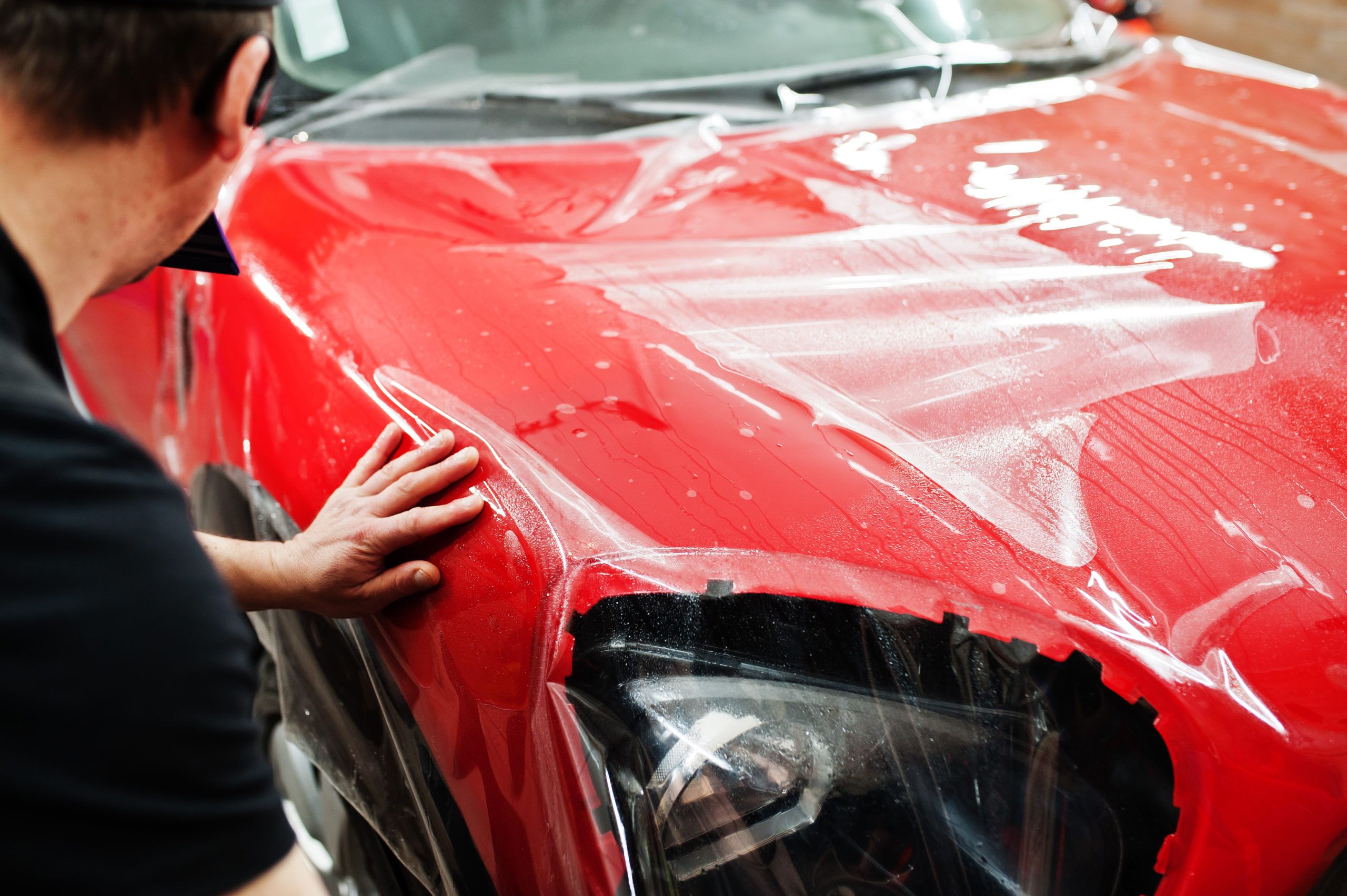How Paint Protection Film Safeguards Your Vehicle from Scratches and Damage
How Paint Protection Film Safeguards Your Vehicle from Scratches and Damage
Blog Article
The Value of Paint Defense Movie in Preserving Your Vehicle's Finish
Repaint Defense Film (PPF) emerges as a critical gamer in this sector, supplying an almost unnoticeable guard that combats the daily risks of the roadway. This leads us to consider-- what makes PPF an essential option for vehicle fanatics and owners alike?
Recognizing Paint Protection Film
Paint protection film (PPF), frequently referred to as a "clear bra," is a thermoplastic urethane film related to the repainted surface areas of vehicles to protect them from damages brought on by rocks, pests, and small abrasions. This innovative film is thoroughly crafted to make sure ideal quality and is designed to be practically undetectable when effectively applied. It serves as a sacrificial layer, absorbing the effect of day-to-day threats, thereby preserving the automobile's excellent look.
PPF is typically made up of numerous layers, each offering a certain function. The top layer is a clear coat that gives a shiny surface while enhancing UV resistance, avoiding the film from yellowing over time.
Advantages of Utilizing PPF
While preserving the immaculate appearance of a car is a concern for several owners, utilizing paint security movie (PPF) offers numerous vital benefits. PPF acts as a durable obstacle, securing the vehicle's paint from roadway debris, rocks, and minor abrasions that can occur during normal driving.
PPF gives a protective layer that alleviates the results of these aspects, decreasing paint fading and maintaining a glossy surface over time. Furthermore, PPF is designed to be basically invisible, ensuring that the initial color and style of the car remain plainly displayed without change.
Additionally, the self-healing buildings of sophisticated PPF add to its appeal. When subjected to warm, the film can heal minor scratches and swirl marks, making certain the automobile preserves a flawless outside. Collectively, these advantages make PPF an indispensable device for car preservation.
Just How PPF Works
To recognize the efficiency of paint protection movie (PPF), it is important to look into its structure and application process. PPF linked here is composed of a multi-layered product, generally polyurethane or a comparable polymer. This transparent movie is developed to soak up the impact from ecological and physical elements, such as roadway particles, UV rays, and small abrasions. The movie's leading layer is engineered to be both sturdy and versatile, permitting it to satisfy the unique shapes of a vehicle's surface area while offering a durable guard against damages.
The application process of PPF is precise, needing proficient service technicians to make certain a smooth and bubble-free coating. Applied with a specialized adhesive, PPF is meticulously placed and extended over the preferred areas.
When installed, PPF offers a nearly invisible obstacle that preserves the lorry's initial paintwork, preserving its aesthetic appeal and resale value over time.
PPF Vs. Various Other Safety Choices
When considering vehicle paint protection, proprietors have a number of alternatives, each with its unique advantages and limitations. Repaint Security Film (PPF) is renowned for its durable safety qualities, offering a virtually undetectable barrier that shields versus scratches, chips, and environmental impurities. Its self-healing residential properties better improve its value, permitting small abrasions to vanish with direct exposure to warm.

Plastic covers, while offering aesthetic personalization, do not naturally secure the underlying paint from chips or scrapes, making them much less ideal for pure protection purposes. Each option matches various demands and spending plans, but for those prioritizing extensive, long-term protection, PPF stands apart as the remarkable option. Its mix of longevity, self-healing innovation, and very little upkeep demands makes it a favored choice for protecting a car's beautiful finish.
Tips for Maintaining PPF

Analyze see here now the movie very closely for any kind of signs of lifting or bubbling, particularly around the sides. If you recognize locations that require repair work, speaking with a specialist installer is advised to ensure proper handling.
In Addition, while PPF supplies superb security against UV rays, car park your car in shaded areas whenever feasible can further prolong the movie's life expectancy. Consider applying a specialized PPF sealant for added defense versus ecological pollutants.
Conclusion
In verdict, Paint Security Movie (PPF) serves as a crucial part in maintaining a car's visual and economic value. When compared to various other safety actions, PPF provides remarkable defense and longevity, making it an important investment for this link protecting a lorry's finish over time.
Report this page